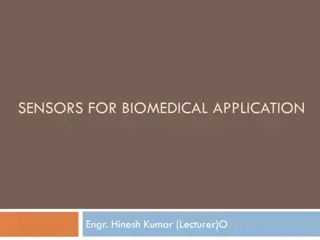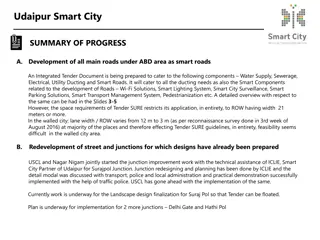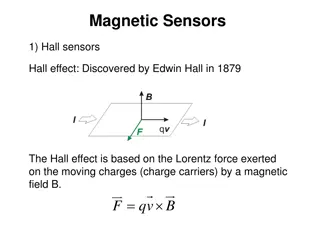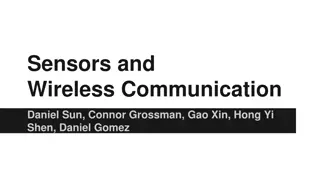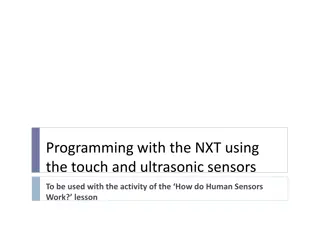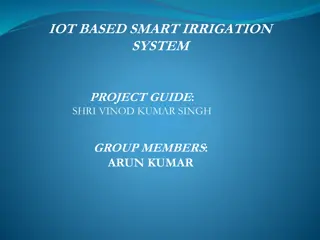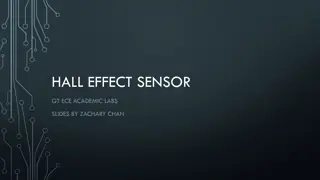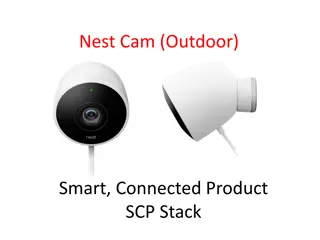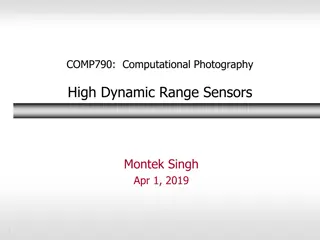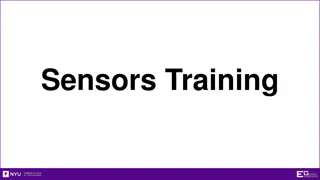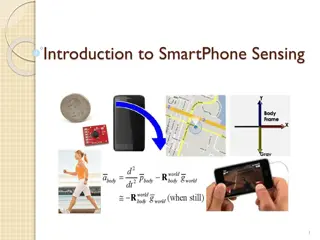Smart Home Control with Head-Mounted Sensors
Wearable ubiquitous computers like smart glasses and neuro-headsets are utilized to achieve ubiquitous computing in smart homes. A vision system is proposed that combines visual cues and cognitive signals to enable users to control household objects using brain activity. The prototype integrates camera input and EEG signals to select and modify objects based on user intent. Challenges include cognitive signal variations, high energy costs, and heavy computing requirements. The system needs tuning for performance and energy efficiency to be attractive to consumers.
- Smart Home Control
- Wearable Computers
- Brain-Computer Interface
- Ubiquitous Computing
- Cognitive Signals
Download Presentation

Please find below an Image/Link to download the presentation.
The content on the website is provided AS IS for your information and personal use only. It may not be sold, licensed, or shared on other websites without obtaining consent from the author. Download presentation by click this link. If you encounter any issues during the download, it is possible that the publisher has removed the file from their server.
E N D
Presentation Transcript
Vision: Smart Home Control with Head- Mounted Sensors for Vision and Brain Activity Pieter Simoens, Elias De Coninck, Thomas Vervust, Jan- Frederik Van Wijmeersch, Tom Ingelbinck, Tim Verbelen
Wearable Ubiquitous Computers Ubiquitous computing is a concept where computing is made to appear everywhere and anywhere Increasing number of common household devices being connected to the internet Wearable computers, like smart glasses and neuro- headsets, are one such means of achieving everywhere computing
Home Cloud Model Heavy computation offloaded onto home cloudlet
Capturing the Users Intent User s gaze represents the objects or persons that have their full attention, incorporate with front facing video camera Design interface such that user can quickly tell computer what to manipulate and how to do so Using cognitive states to detect thought processes, such as facial movement and cognitive activities to manipulate computer also in progress
Prototype Combines visual cues (camera) and cognitive signals (Electroencephalography or EEG) to select correct household object, then make changes to it, all as desired by the user
Difficulties Out of the box readiness due to differing cognitive signals between people Energy costs associated with continuously streaming raw video and EEG signals over wireless is high Heavy computing must be done on a cloudlet and can t be done by tiny computers such as smart glasses Multiple objects simultaneously in view
Conclusion System will require tuning and optimization for performance and energy consumption System must also be reliable (not frustrating) for the average consumer to find an interest in it and buy it
Works Cited Simoens, Pieter, Elias De Coninck, Thomas Vervust, Jan-Frederik Van Wijmeersch, Tom Ingelbinck, and Tim Verbelen.Vision: Smart Home Control with Head-Mounted Sensors for Vision and Brain Activity.ACM Digital Library. ACM, 11 June 2014. Web. 15 Oct. 2014.





